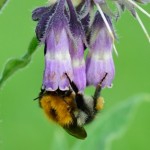From Uncategorized
Biodiversity, livelihoods and poverty alleviation

THEMATIC BRIEF: This brief outlines how biodiversity can contribute to livelihoods and how conservation of biodiversity can facilitate poverty alleviation. Livelihoods related argumentation can be a powerful tool for biodiversity conservation. However, there are also trade-offs in decisions, as the provision of some services coming from biodiversity may be in conflict.
Five main points of advice for improving biodiversity argumentation
Comment
Welcome to the Search and Filter page
A search using the filters and search box on the left is real content only, it excludes reference and instruction pages. Use the search box in the upper right corner to searche the whole site.
Setting a filter will deliver all items with specific information on that subject (e.g. checking ‘Ecosystem services’ does NOT deliver all items where ecosystems services are merely mentioned, but only the ones that really contain specific information on them).
Don't forget to scroll down to the SUBMIT button after setting filters!
With more filters in a group set, the search results will consist of all items answering to either one or both of the filter criteria (e.g. checking ‘national’ AND ‘regional’ in the scale group will deliver all items marked national, regional or national as well as regional). Checking filters in more than one group will deliver only those items answering to the criteria in BOTH groups (e.g. checking ‘national’ AND ‘effectiveness’ will deliver only items marked as national AND marked as containing specific information on effectiveness.
The search box above the filters combines with them. E.g. setting ‘National’ in combination with entering ‘argument’ in the search box delivers all items labelled as ‘national’ AND containing the word argument.
For brief instructions you can also hover your mouse pointer over the "![]() " symbol on the the top left side.
" symbol on the the top left side.
Biodiversity conservation using ideas and instruments of habitat and area protection networks

THEMATIC BRIEF: This brief explains how ideas and instruments for habitat protection have evolved and contribute to an integrated biodiversity conservation strategy in Europe. The brief considers the protected areas designated and managed under the Habitats Directive of the European Commission and the Bern Convention of the Council of Europe, with reference to spatial networks and the conservation of biodiversity outside protected areas.
How biodiversity contributes to ecosystem services

THEMATIC BRIEF: This brief summarises the evidence from a literature review on how biodiversity contributes to ecosystem services. It shows that conservation of biodiversity is essential if it is to continue to provide a range of services that humans need and that careful management is needed to balance trade-offs between services.
Governance of Ecosystem Services
THEMATIC BRIEF: The need for conservation is increasingly justified with the concept of ecosystem services. For these ecosystem service arguments to be effective, they need to be understood and placed in the context where decisions are made. This brief outlines a broad classification of governance implementation mechanisms (referred to here as governance “modes”) that was developed within BESAFE to aid understanding of decision-making regarding ecosystem services. Four different modes of governance are identified: (1) hierarchical governance; (2) scientific-technical governance; (3) adaptive collaborative governance; and (4) governing strategic behaviour. Although these different modes of governance usually co-exist, decision-makers and decision-making situations can place stronger emphasis on some rather than on others.
Tidal Turbine Technology within a Marine Protected Area in Northern Ireland, UK

CASE STUDY BRIEF: This case study examines science informed decision-making processes amidst the potential conflicts of interest between the installation of a hi-tech underwater tidal turbine to supply renewable energy and responsibilities to protect marine biodiversity and associated ecosystem services. It illustrates how an adaptive management approach that takes account of a cumulative gain in scientific knowledge can provide a powerful means of successfully arguing to ensure biodiversity protection and human well-being, while still supporting energy, technological and commercial goals.
Uses and abuses of economic arguments in the development and governance of synthetic biology

CASE STUDY BRIEF: The novel science field of synthetic biology is a key part of the emerging bio-economy. By constructing new artificial biological elements and re-designing existing ones for improving useful features, it is considered to hold high potential as a solution for climate change, diseases and energy resources, for enhanced agricultural efficiency and new raw materials.
